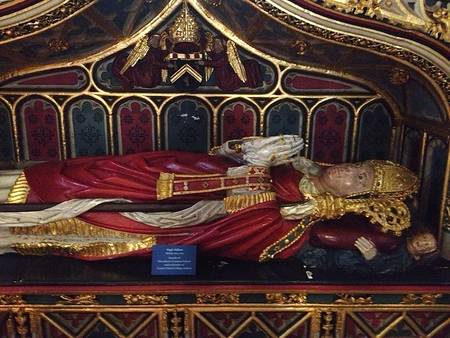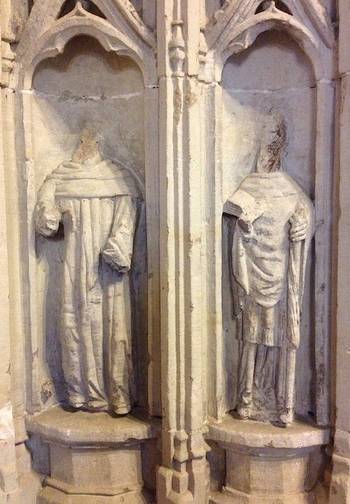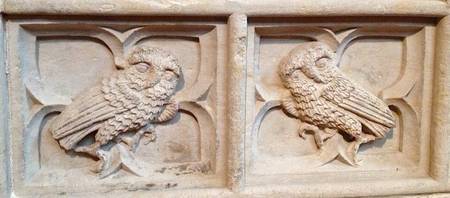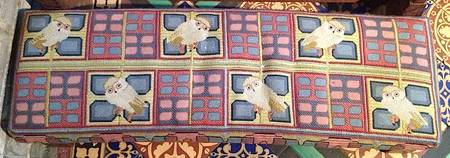At the far east end of Exeter cathedral lies the tomb-chest of Hugh Oldham (d. 1519), with his painted effigy reposing upon it.

Oldham rose rapidly in the church, and may have owed his preferment at least in part to the good opinion of Margaret Beaufort, mother of Henry VII, in whose household he once served as chancellor. His nomination as Bishop of Exeter in 1505 may have come about with her help. Margaret was a member of the House of Lancaster, and Oldham himself was a Lancastrian by birth. His home village was near Manchester, and his educational foundations included Manchester Grammar School (and Corpus Christi College, Oxford). His chantry chapel is at the end of the south aisle. It is dedicated to St Boniface and St Saviour and bears the scars of the Reformation: not a single carved saint of the many that decorate the exterior still possesses its head. The altarpiece inside has been similarly disfigured. According to the cathedral guide, this iconoclasm was the work of the Dean of Exeter himself, in a bid to demonstrate his allegiance to the reformers.

The leitmotif of the chapel’s decorative scheme is the owl, which Bishop Hugh used as his personal device, constructing a rebus from it: HughOwldham. Once you start looking, you see owls everywhere: along the walls, on the ceiling, even embroidered on the kneelers.








